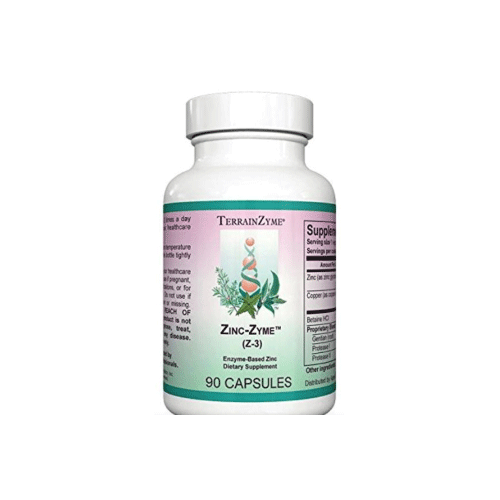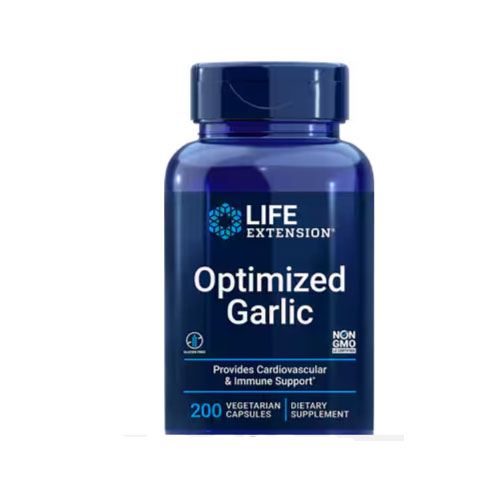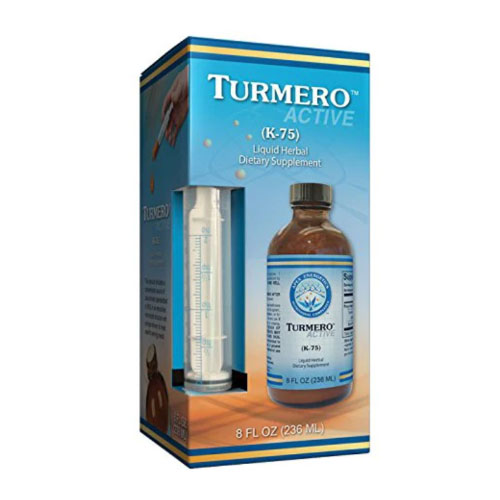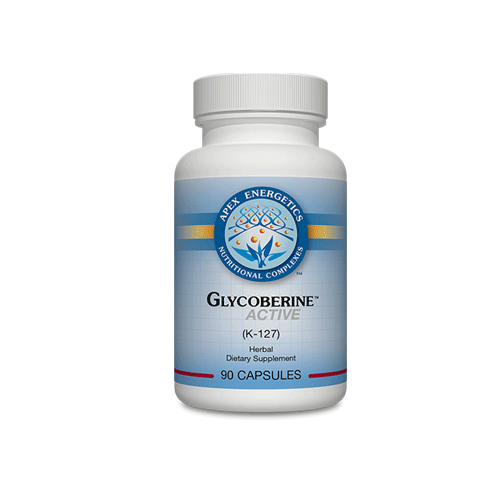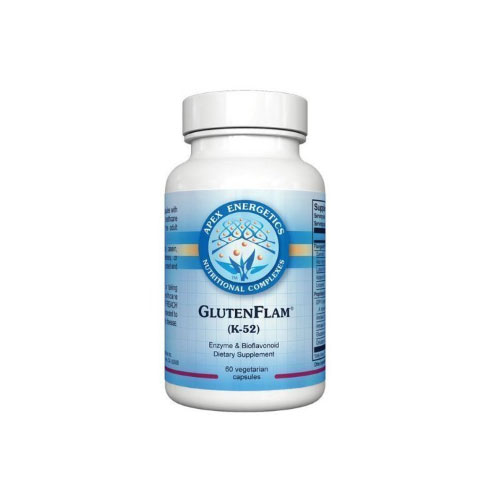Mr. President:
A Remarkable Supplement Has Been Overlooked
by
William Clearfield DO, HMD, FAAFRM, DABMA, FAAMA
Introduction
With the advent of the Dreyfus Fund, Jack Dreyfus (1913-2009) in the 1950s, revolutionized the mutual fund industry. Known as the “Lion of Wall Street,” Dreyfus invested in high growth companies rather than the staid dividend paying blue chip stocks, a novel concept at the time.
Not content with a pioneering trading strategy, Jack changed the way mutual funds were marketed to the public. His direct to consumer concept via television and print were among the first to bring the mutual fund industry to everyday Joes and Josephines across the fruited plain.
Dreyfus understood the power of branding (long before computer logos were even a twinkle in Bill Gates’ eye), and educating the public about the benefits of mutual funds. The Dreyfus Fund created a memorable, distinct brand identity, the Dreyfus Lion. Jack Dreyfus’ face and lion logo was all over the hottest new appliance for everyday Americans: the 12-inch black-and-white TV.
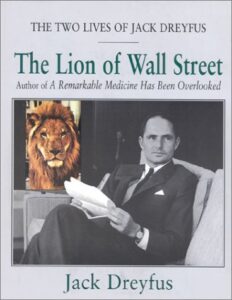
Driven to extremes due to, and to, continue his success, Dreyfus burned out sinking into a deep depression. There were no SSRIs, SNRIs or atypical antidepressants available at that time. He was told “you are rich, you are just getting older. What are you complaining about? Just live with it.”
Eschewing that “wisdom” of the day, Dreyfus went on a quest for a cure. He eventually came across phenytoin, a one-hundred-year-old seizure medication, with unexpected mood-elevating and calming effects. In short order, his mind cleared, he was able to sleep normally, his depression lifted,and his career path, with an added twist, continued.
Such was his relief from his depression, Dreyfus vowed to “spread the word” to others. (And right on cue, the AMA and the Food and Drug Administration took exception to his writings. After all, it is not like he is a doctor or anything.)
In 1963, Dreyfus wrote “Mr. President, A Remarkable Medicine, Has Been Overlooked.
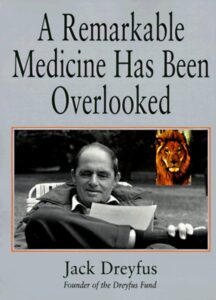
Dreyfus dedicated nearly $80 million to studying the uses of phenytoin. Written as a medical mystery, Dreyfus uncovered over 70 symptoms and disorders improved with phenytoin therapy. The book was Jack’s plea to then President John F. Kennedy to make phenytoin available to the whole world.
Loving a good “Who done it? ” and fascinated by medical history, I read Dreyfus’ story shortly after discovering another substance with a broad range of efficacy hidden in plain sight. By connecting the dots in two of my favorite remedies, Longevinex and Longevinex Advantage, I felt the same powerful, irresistible urge, a “white hot imperative,” that thing that one has to do to make one’s life meaningful, no matter what, to bring their main ingredient, resveratrol, with more than fifty ways to improve health to my audience’s attention.
Indeed Mr. or Madame President; To wit:
Another Remarkable Supplement has been Overlooked:
50 Ways Resveratrol Improves Health (1-4)
| 1. Reduces inflammation.
2. Improves cholesterol 3. Increases insulin sensitivity 4. Protects the heart 5. Is an anti-cancer agent 6. Enhances memory and cognition 7. Improves bone strength 8. Increases your wind and endurance 9. Helps you lose weight 10. Improves your skin. |
31. Protects against foodborne illnesses
32. Reduces asthma 33. Lessens autoimmune disease symptoms 34. Protects the liver 35. Protects the kidney 36. Lessens menopause symptoms 37. Improves fertility 38. Can strengthen your teeth and gums 39. Is an antiviral agent 40. Reduces arthritis |
| 11. Protects against ultraviolet radiation
12. Protects against macular degeneration 13. Improves liver function 14. Lowers cholesterol 15. Protects against atherosclerosis 16. Protects the brain/decreases CVA risk 17. Reduces the incidence of diabetes 18. Enhances the immune system 19. Protects against infections 20. Improves respiratory function
|
41. Improves ADHD symptoms
42. Improves your lung function 43. Protects the skin against cancer 44. Improves insulin resistance 45. Reduces the risk of heart disease 46. Reduces the risk of dementia 47. Reduces the risk of obesity 48. Balances estrogen 49. Reduces chronic fatigue syndrome 50. Reduces the risk of and improves the outcomes of migraine headaches |
| 21. Reduces reactive oxidative stress,
22. Improves sleep 23. Helps alleviate anxiety 24. Helps alleviate depression 25. Reduces joint pain. 26. Improves muscle strength 27. Aids in erectile dysfunction 28. Protects the brain from neurodegenerative diseases, Alzheimer’s, and Parkinson’s Disease 29. Increases longevity 30. Protects the gut |
The Miracle of Resveratrol
A polyphenol compound found in grapes, berries, peanuts, red wine, and Japanese knotweed, resveratrol is renowned for its anti-inflammatory, antioxidant, and anti-aging activities. (5-7) Resveratrol protects the body against oxidative damage, termed reactive oxidative species (ROS), caused by free radicals while simultaneously reducing the harmful effects of excess androgens, insulin resistance, and chronic degenerative diseases. (8)
A perusal of a multitude of online supplement companies reveals well over 350 types, brands, and combinations of resveratrol. (9) What do we make of this array? How do we decide which ones deserve our attention? And no, your aunt’s nephew’s third cousin, that twenty-two-year-old brat you hated as a kid who is now in optometry school in Indianapolis, opinion doesn’t count.
Instead, and, oh I hate to say it this way. Here goes. Don’t hate me. ‘‘Trust the science.” (™)
“The Science”
Two main types of resveratrol exist. The more common “cis” form has its atoms on the same side of a “backbone” double bond, creating a zig-zag or bent shape to its structure.
The more potent “trans” form is a straighter molecule, positioning its’ atoms on the opposite side of its double bond.
“Cis”-resveratrol is effective as an anti-inflammatory agent. “Trans”-resveratrol exhibits both anti-inflammatory and antioxidant activity. Trans-resveratrol is more stable, more readily absorbed, and a more biologically active molecule. (10)
By eliminating the “cis” resveratrol products, we whittle down our list of three hundred and fifty compounds to less than fifty. Fifty is better than three hundred and fifty, but still too many.
We need to dive deeper. Which of the myriad of benefits noted above that we see from resveratrol are most important? It comes down to individual circumstances of course, but from my lens over the targets of both medical repair and longevity, here are my top five go-to’s:
The Resveratrol (RSV) 5
1. Resveratrol reduces inflammation:
- Resveratrol reduces oxidative stress, an imbalance between the production of reactive oxygen species (ROS), essentially “wear and tear on the body, and the ability of the body’s natural antioxidant defenses to neutralize them. This imbalance leads to inflammation, cellular damage, and insulin resistance. (11)
- Resveratrol reduces inflammatory cytokines, small proteins essential for cell-to-cell communication in the immune system. Cytokine proteins regulate inflammation, hematopoiesis, and other immune responses. (12) RSV reduces inflammatory cytokines TNF-α, IL-1β, IL-6, and IFN-γ while inducing the anti-inflammatory cytokine IL-10.(13)
2. Resveratrol improves HDL (Good) Cholesterol) and Reduces LDL (Bad cholesterol):
- A study of middle-aged and elderly mice found a significant difference in cholesterol levels if treatments started early. (5-month-old mice are equivalent to ages 39-47 in human years. 7-month-old mice equal ages 56-69). (14)
Lipid Parameters 5 Month Old Mouse 7 Month Old Mouse HDL
LDL
HMG-CoA Synthase
HMG-CoA ReductaseIncreased 86%
Decreased 40-56%
Increased 75%
Increased 46%Decreased 15%
Decreased 39%
Decreased 36%
Decreased 26%- HMG-Co synthase and reductase are the enzymes that control cholesterol synthesis.
- On average, resveratrol reduces total cholesterol by 7.65 mg/dL (15)
2. Increasing Insulin Sensitivity (16)
- a. Resveratrol improves insulin utilization by reducing inflammation and cholesterol levels, decreasing vasoconstriction and vascular remodeling to lessen the ischemic environment for tissues.
- b. Improved blood flow to tissues counteracts the vasoconstriction caused by hyperinsulinemia, resulting in improved glucose utilization.
- c. Resveratrol activates Sirtuins, longevity-inducing proteins that regulate cellular processes, including aging, cell death, and stress resistance.
- d. Resveratrol activates NAD-dependent proteins like estradiol (E2). RSV preferentially binds to estrogen receptors (ER), promoting glucose transporter type-4 (GLUT4) translocation and increasing glucose uptake.
- e. Resveratrol improves insulin resistance by reducing oxidative stress.
- f.
3. Cardioprotection (19)
- a. Resveratrol increases nitric oxide (NO) and decreases lactate dehydrogenase levels, increasing blood flow to the heart and brain.
- b. RSV reduces the incidence and duration of ventricular tachycardia (VT) and ventricular fibrillation (VF).
- c. Resveratrol prevents damage to blood vessels, reduces low-density lipoprotein (LDL) cholesterol (the “bad” cholesterol), and prevents blood clots. (20)
- d. RSV reduces relative cardiovascular risk (RR). Risk reduction is dose-dependent with red but not white wine consumption. A significant decrease (RR: 0.66, 95% CI 0.57-0.75) is associated with moderate (1-2 drinks or 150-300 mL/d) versus no wine consumption. (21)
4. Antineoplastic Effects of Resveratrol
- a. RSV activates the Nrf2 gene expression to downgrade cancer-inducing catechol estradiol. (22)
- b. Resveratrol suppresses tumor regrowth after therapy with cisplatin. RSV has the potential to prolong disease-free living. (23)
- c. Resveratrol’s antioxidant and anti-inflammatory mitigate chemo-radiation toxicity in normal tissue. (24)
- d. RSV sensitizes cancer cells to both chemotherapy drugs and radiation. (25)
- e. RSV slows the growth of certain types of cancer by reducing inflammation. (26)
- f. Preclinical cancer studies with at least a modicum of success in reducing symptoms or prolonging survival include: (27)
- Skin cancer
- Breast cancer
- Colorectal Cancer
- Prostate Cancer
- Liver cancer
- Pancreatic cancer
- Lung Cancer
Thus we are back to our original question: How do we choose from the fifty or so medically active trans-resveratrol products?
-
The ‘Source’ and Peripherals are With You
Of all the sources of resveratrol, the most potent, most bioavailable, and most sought-after is that derived from Japanese knotweed. (28) Japanese knotweed grows in dense stands, quickly reaching incredible heights, making it almost impossible for predators to feed on or trample it. Its roots are also incredibly hardy, making a strand of Japanese knotweed a reliable source.
Longevinex and Longevinex Advantage’s resveratrol is derived solely from Japanese knotweed.
In addition to their Japanese knotweed-based resveratrol content, the Peripherals make Longevinex and Longevinex Advantage shine.
Longevinex, the original’s peripherals include quercetin, rice bran IP6, vitamin D3, nucleotides, beta-cyclodextrin, fisetin, beta-glucan, and vitamin B1 as benfotiamine.
Longevinex Advantage mimics its parent, Longevinex, while adding lutein/zeaxanthin for eye protection and pure hyaluronan to thicken hair, smooth the skin, lubricate the joints, and cushion the nerves. (29)
The Main Ingredient-Trans-Resveratrol
Trans-resveratrol (TRV) promotes nitric oxide, enhances endothelial (blood vessel wall) function and blood flow while reducing arterial stiffness, inflammation, oxidative stress, and (bad) LDL cholesterol. (30)
TRV crosses the blood-brain barrier, reducing neuronal inflammation and oxidative stress. TRV slows the progression of neurodegenerative diseases such as Alzheimer’s and Parkinson’s Disease. (31)
TRV activates SIRT1, promoting mitochondrial well-being, cellular energy production, and DNA repair mechanisms while slowing senescence and aging. (32)
-
- Vitamin D3 (36)
- QuercetinThe Peripherals
Quercetin, a flavonoid with powerful antioxidant properties, acts synergistically with trans-resveratrol. Quercetin promotes vasodilation, improves circulation, reduces blood pressure and LDL cholesterol, and inhibits platelet aggregation, reducing the risk of blood clots. (33)
Quercetin’s antioxidant properties protect neurons from oxidative stress and inflammation, reducing the risk of neurodegenerative diseases. (34)
Quercetin stimulates cellular pathways that are involved in longevity. It activates AMPK and autophagy and reduces senescent cell burden, extending lifespan. (35)
Vitamin D3 reduces inflammation and is essential for immune function, bone, insulin regulation, mood stabilization, and cardiovascular health.
Vitamin D3 regulates blood pressure by modulating the renin-angiotensin system.
Vitamin D3 sufficiency is associated with improved cognitive function and reduced risk of neurodegenerative diseases.
Vitamin D 3 preserves bone health, ensuring a healthy back end of life.
Vitamin D3 regulates insulin production and metabolism. (37)
A “pro-hormone” Vitamin D 3 aids the proper function of cortisol and growth hormone. (38)
Vitamin D 3 acts as a sleep “aid.” (39)
Crucial for brain health, low levels of Vitamin D 3 lead to anxiety, attention deficits, depression, cognitive decline, mood disorders, obsessive-compulsive tendencies, and schizophrenia and Alzheimer’s disease. (40)
Vitamin D 3 increases free testosterone concentrations by affecting the cholesterol side chain cleavage enzyme. This enzyme converts cholesterol into pregnenolone, the precursor of sex hormones, including testosterone. (41)
- Cyclodextrin
Obtained from starch and composed of seven glucose units in a ring-like structure, beta-cyclodextrin is used as an inclusion complex to enhance the absorption and bioavailability of other ingredients. (42)
By forming complexes with various compounds, beta-cyclodextrin improves resveratrol’s solubility, stability, and bioavailability in Longevinex.
Utilized in the food and fragrance industries, beta-cyclodextrin preserves sensitive flavors and aromas, preventing their degradation due to exposure to light, heat, or oxidation.
On a global scale, beta-cyclodextrins form inclusion complexes with air pollutants and soil contaminants, aiding environmental cleanup efforts. (43)
- Rice Bran IP6:
The chemically active component of rice bran, IP6, inositol hexaphosphate, is a potent antioxidant and immune function supporter.
IP 6 maintains cellular integrity and supports healthy cell growth. (44)
Rice bran phytate inhibits cholesterol absorption in the gut while lowering LDL (bad) cholesterol on average by 6.91 mg/dL. (F.Y.I. For every 1 mg/dL drop in LDL, cardiac disease risk decreases by 1-2%. )
Rice bran phytate reduces the risk of high-fat diet-induced hyperglycemia. (45-46)
Rice bran phytate is associated with a decreased production of the pro-inflammatory cytokines IL-1B, IL-2, TNF-alpha, and INF-gamma while increasing the production of anti-inflammatory cytokines IL-22 and IL-23. (47)
Rice bran phytate is anti-hypertensive and improves endothelial function. (48-49)
- Nucleotides:
Nucleotides are essential molecules involved in cellular repair and regeneration. (50)
Nucleotides form the building blocks of DNA. Adequate nucleotide availability is necessary for efficient DNA repair. (51)
Nucleotides are involved in energy metabolism, specifically ATP production. Nucleotides combat age-related fatigue. (52)
A key component in collagen synthesis, Nucleotides supply tissue structural support and elasticity. Adequate nucleotide levels contribute to the maintenance of healthy, youthful-looking skin and tissue integrity. (53)
A “must have” for proper immune function, Nucleotides support the production and maturation of immune cells, our primary defense against invading pathogens. (54)
Nucleotides participate in synthesizing signaling regulators cyclic adenosine monophosphate (cAMP) and guanosine monophosphate (cGMP), which regulate cellular processes. (55)
- Beta Glucan
A polysaccharide found in yeast, oats, and mushrooms, beta-glucan modulates the immune system. (56)
Beta-glucan activates immune cells, enhancing their ability to defend against pathogens and decreasing chronic inflammation. (57)
Beta-glucans boost collagen for a more youthful-looking skin, reduce the appearance of fine lines and wrinkles, improve skin elasticity and firmness, enhance skin hydration and moisture retention, and support a healthy, vibrant complexion. (58)
- Fisetin
Fisetin, a flavonoid found in various fruits and vegetables, exhibits potent antioxidant and anti-inflammatory properties. (59)
Reactive oxidative stress (ROS) disrupts macromolecules’ chemical integrity, increasing the risk of neurodegenerative diseases.
Fisetin protects against age-related cognitive decline, improves memory, and promotes synaptic plasticity, essential for optimal brain function. (60)
Fisetin plays a crucial role in improving focus, concentration, and mood. (61)
- Vitamin B1 as Benfotiamine:
Vitamin B1, in the form of benfotiamine, supplies superior bioavailability to traditional vitamin B1.
Benfotiamine protects nerve tissue against oxidative stress and the formation of advanced glycation end-products (AGEs). (62)
AGEs are associated with accelerated aging and various age-related diseases. (63)
Benfotiamine enhances cognitive function and mental clarity. (64)
Benfotiamine supports healthy skin aging and appearance by promoting collagen production.
Benfotamine reduces wrinkles and age spots. (65)
Longevinex Advantage contains the same ingredients as Longevinex the Original with the added benefits of lutein/zeaxanthin to preserve eye health and hyaluronic acid to lubricate and thicken the skin.
- Lutein/Zeaxanthin:
Lutein and zeaxanthin reduce oxidative stress, enhance visual acuity, protect against age-related macular degeneration (AMD) and cataracts. (66-67)
Lutein and Zeaxanthin promote healthy skin by improving hydration while preventing the formation of fine lines and wrinkles. (68)
- Hyaluronic Acid: (69-70)
Hyaluronic acid naturally occurs in the skin, connective tissues, and joints.
Hyaluronic acid is crucial in maintaining skin hydration for a plump, youthful appearance.
Hyaluronic acid improves skin elasticity and firmness, enhances moisture retention, restores dry, dull-looking skin, and reduces “age” spots and uneven skin tone.
Hyaluronic acid contributes to joint lubrication, comfort, and flexibility.
- Vitamin D3 (36)
-
Summary
Resveratrol, one of our top go-to supplements, is known for its over fifty health benefits (1-4). With more than 350 varieties available, finding an effective, safe, and affordable option at times feels overwhelming.
Once we discovered that resveratrol has two distinct molecules, we immediately ruled out the weaker “cis” resveratrol, narrowing our options from over 350 to fewer than 50 trans-resveratrol molecules.
“Trans” resveratrol has superior bioavailability and is a more potent biological agent. Unlike its “cis” counterpart, trans-resveratrol remains stable and retains its efficacy when exposed to elements. More importantly, TRV activates SIRT1, a cellular and mitochondrial health and longevity protein. After thoroughly searching for a product that meets our criteria and sports a superior delivery system containing cyclodextrin, we discovered Longevinex Inc.’s Longevinex and Longevinex Advantage.
Cyclodextrin, a sugar molecule derived from starch, enhances the absorption and bioavailability of the other ingredients. Combined with trans-resveratrol, cyclodextrin elevates Longevinex to “gold metal” status among resveratrol supplements.
But wait! There’s more!
Longevinex is packed with added ingredients such as quercetin, rice bran IP6, vitamin D3, nucleotides, beta-cyclodextrin, fisetin, beta-glucan, and vitamin B1 (in the form of benfotiamine).
These “add-ons,” along with trans-resveratrol and cyclodextrin, mimic the benefits of intermittent fasting by stimulating the Sirtuin 1 survival gene. Longevinex chelates heavy metals, balances the zinc/copper ratio, inhibits mTOR to promote longevity, activates the longevity gene Klotho, and improves blood flow by enhancing nitric oxide, causing smooth muscles in the coronary and cerebral arteries to relax.
Longevinex is neuroprotective because it crosses the blood-brain barrier, triggering the Nrf2 gene and activating internal antioxidants like glutathione, catalase, and SOD. Longevinex also provides DNA parts (nucleotides) while slowing the cell renewal cycle to facilitate DNA repair.
Longevinex regenerates mitochondria to enhance the influence of beneficial gut bacteria.
Longevinex Advantage says hold my beer! Longevinex Advantage goes a step further by adding lutein and zeaxanthin to promote eye health and hyaluronic acid to improve skin hydration and thickness.
But wait! There’s Still More!
Longevinex “seals the deal” by coming in an opaque shell to protect its ingredients from light damage, thus ensuring that every dose is “pharmaceutical” grade quality.
Conclusion
Longevinex and Longevinex Advantage are designed to enhance your anti-aging, anti-inflammatory, and antioxidant regimens. Each component acts synergistically with each other creating a 1+1=5 rather than 2 effect. The result is a streamlined, comprehensive, (and effective) supplement for enhancement of your overall well-being.
xxxxxx
References
- https://supplements.selfdecode.com/blog/top-15-scientific-health-benefits-of-resveratrol-with-references/
- Salehi, B., Mishra, A. P., Nigam, M., Sener, B., Kilic, M., Sharifi-Rad, M., Fokou, P. V. T., Martins, N., & Sharifi-Rad, J. (2018). Resveratrol: A Double-Edged Sword in Health Benefits. Biomedicines, 6(3), 91. https://doi.org/10.3390/biomedicines6030091
- Ramírez-Garza, S. L., Laveriano-Santos, E. P., Marhuenda-Muñoz, M., Storniolo, C. E., Tresserra-Rimbau, A., Vallverdú-Queralt, A., & Lamuela-Raventós, R. M. (2018). Health Effects of Resveratrol: Results from Human Intervention Trials. Nutrients, 10(12), 1892. https://doi.org/10.3390/nu10121892
- Lolita Kuršvietienė, Inga Stanevičienė, Aušra Mongirdienė, Jurga Bernatonienė, Multiplicity of effects and health benefits of resveratrol, Medicina, Volume 52, Issue 3, 2016, Pages 148-155,ISSN 1010-660X
- Koushki, M., Amiri-Dashatan, N., Ahmadi, N., Abbaszadeh, H. A., & Rezaei-Tavirani, M. (2018). Resveratrol: A miraculous natural compound for disease treatment. Food science & nutrition, 6(8), 2473–2490. https://doi.org/10.1002/fsn3.855
- Koushki, M., Amiri-Dashatan, N., Ahmadi, N., Abbaszadeh, H. A., & Rezaei-Tavirani, M. (2018). Resveratrol: A miraculous natural compound for disease treatment. Food science & nutrition, 6(8), 2473–2490. https://doi.org/10.1002/fsn3.855
- Salehi, B., Mishra, A. P., Nigam, M., Sener, B., Kilic, M., Sharifi-Rad, M., Fokou, P. V. T., Martins, N., & Sharifi-Rad, J. (2018). Resveratrol: A Double-Edged Sword in Health Benefits. Biomedicines, 6(3), 91. https://doi.org/10.3390/biomedicines6030091
- https://supplements.selfdecode.com/blog/top-15-scientific-health-benefits-of-resveratrol-with-references/
- https://www.amazon.com/s?k=resveratrol+supplements&crid=5U6HU0AD4NSP&sprefix=resveratrol+supplements%2Caps%2C771&ref=nb_sb_noss_1
- Meng T, Xiao D, Muhammed A, Dengresveratrol’s Chen L, He J. Anti-Inflammatory Action and Mechanisms of Resveratrol. Molecules. 2021 Jan 5;26(1):229. doi: 10.3390/molecules26010229. PMID: 33466247; PMCID: PMC7796143.
- Zhang, T., Chi, Y., Ren, Y., Du, C., Shi, Y., & Li, Y. (2019). Resveratrol Reduces Oxidative Stress and Apoptosis in Podocytes via Sir2-Related Enzymes, Sirtuin 1 (SIRT1)/Peroxisome Proliferator-Activated Receptor γ Co-Activator 1α (PGC-1α) Axis. Medical science monitor : international medical journal of experimental and clinical research, 25, 1220–1231. https://doi.org/10.12659/MSM.911714
- Zhang, J. M., & An, J. (2007). Cytokines, inflammation, and pain. International anesthesiology clinics, 45(2), 27–37. https://doi.org/10.1097/AIA.0b013e318034194e
- Meng, T., Xiao, D., Muhammed, A., Deng, J., Chen, L., & He, J. (2021). Anti-Inflammatory Action and Mechanisms of Resveratrol. Molecules (Basel, Switzerland), 26(1), 229. https://doi.org/10.3390/molecules26010229
- Sánchez-Melgar, A., Izquierdo-Ramírez, P. J., Griñán-Ferré, C., Pallàs, M., Martín, , & Albasanz, J. L. (2022). Neuroprotective Effects of Resveratrol by Modifying Cholesterol Metabolism and Aβ Processing in SAMP8 Mice. International journal of molecular sciences, 23(14), 7580. https://doi.org/10.3390/ijms23147580
- Akbari, M., Tamtaji, O. R., Lankarani, K. B., Tabrizi, R., Dadgostar, E., Haghighat, N., Kolahdooz, F., Ghaderi, A., Mansournia, M. A., & Asemi, Z. (2020). The effects of resveratrol on lipid profiles and liver enzymes in patients with metabolic syndrome and related disorders: a systematic review and meta-analysis of randomized controlled trials. Lipids in health and disease, 19(1), 25. https://doi.org/10.1186/s12944-020-1198-x
- Wong, R. H. X., & Howe, P. R. C. (2018). Resveratrol Counteracts Insulin Resistance-Potential Role of the Circulation. Nutrients, 10(9), 1160. https://doi.org/10.3390/nu10091160
- Cantó, C., & Auwerx, J. (2012). Targeting sirtuin 1 to improve metabolism: all you need is NAD(+)?. Pharmacological reviews, 64(1), 166–187. https://doi.org/10.1124/pr.110.003905
- Penumathsa, S. V., Thirunavukkarasu, M., Zhan, L., Maulik, G., Menon, V. P., Bagchi, D., & Maulik, N. (2008). Resveratrol enhances GLUT-4 translocation to the caveolar lipid raft fractions through AMPK/Akt/eNOS signalling pathway in diabetic myocardium. Journal of cellular and molecular medicine, 12(6A), 2350–2361. https://doi.org/10.1111/j.1582-4934.2008.00251.x
- Li-Man Hung, Jan-Kan Chen, Shiang-Suo Huang, Ren-Shen Lee, Ming-Jai Su, Cardioprotective effect of resveratrol, a natural antioxidant derived from grapes, Cardiovascular Research, Volume 47, Issue 3, August 2000, Pages 549–555, https://doi.org/10.1016/S0008-6363(00)00102-4
- https://www.mayoclinic.org/diseases-conditions/heart-disease/in-depth/red-wine/art-20048281#:~:text=Resveratrol%20might%20help%20prevent%20damage,cholesterol)%20and%20prevent%20blood%20clots.
- Brown, L., Kroon, P. A., Das, D. K., Das, S., Tosaki, A., Chan, V., Singer, M. V., & Feick, P. (2009). The biological responses to resveratrol and other polyphenols from alcoholic beverages. Alcoholism, clinical and experimental research, 33(9), 1513–1523. https://doi.org/10.1111/j.1530-0277.2009.00989.x
- Alavi, M., Farkhondeh, T., Aschner, M. et al. Resveratrol mediates its anti-cancer effects by Nrf2 signaling pathway activation. Cancer Cell Int 21, 579 (2021). https://doi.org/10.1186/s12935-021-02280-5
- Tan L, Wang W, He G, Kuick RD, Gossner G, Kueck AS, Wahl H, Opipari AW, Liu JR. Resveratrol inhibits ovarian tumor growth in an in vivo mouse model. Cancer. 2016 Mar 1;122(5):722-9. doi: 10.1002/cncr.29793. Epub 2015 Nov 30. PMID: 26619367.
- Mortezaee K, Najafi M, Farhood B, Ahmadi A, Shabeeb D, Musa AE. Resveratrol as an Adjuvant for Normal Tissues Protection and Tumor Sensitization. Curr Cancer Drug Targets. 2020;20(2):130-145. doi: 10.2174/1568009619666191019143539. PMID: 31738153.
- Ibid
- Ko, J. H., Sethi, G., Um, J. Y., Shanmugam, M. K., Arfuso, F., Kumar, A. P., Bishayee, A., & Ahn, K. S. (2017). The Role of Resveratrol in Cancer Therapy. International journal of molecular sciences, 18(12), 2589. https://doi.org/10.3390/ijms18122589
- Athar, M., Back, J. H., Tang, X., Kim, K. H., Kopelovich, L., Bickers, D. R., & Kim, A. L. (2007). Resveratrol: a review of preclinical studies for human cancer prevention. Toxicology and applied pharmacology, 224(3), 274–283. https://doi.org/10.1016/j.taap.2006.12.025
- Cucu AA, Baci GM, Dezsi Ş, Nap ME, Beteg FI, Bonta V, Bobiş O, Caprio E, Dezmirean DS. New Approaches on Japanese Knotweed (Fallopia japonica) Bioactive Compounds and Their Potential of Pharmacological and Beekeeping Activities: Challenges and Future Directions. Plants (Basel). 2021 Nov 29;10(12):2621. doi: 10.3390/plants10122621. PMID: 34961091; PMCID: PMC8705504.
- https://longevinex.com/product/advantage-dietary-supplements/
- Li H, Xia N, Hasselwander S, Daiber A. Resveratrol and Vascular Function. Int J Mol Sci. 2019 Apr 30;20(9):2155. doi: 10.3390/ijms20092155. PMID: 31052341; PMCID: PMC6539341.
- Yadav E, Yadav P, Khan MMU, Singh H, Verma A. Resveratrol: A potential therapeutic natural polyphenol for neurodegenerative diseases associated with mitochondrial dysfunction. Front Pharmacol. 2022 Sep 16;13:922232. doi: 10.3389/fphar.2022.922232. PMID: 36188541; PMCID: PMC9523540.
- Fang Y, Wang X, Yang D, Lu Y, Wei G, Yu W, Liu X, Zheng Q, Ying J, Hua F. Relieving Cellular Energy Stress in Aging, Neurodegenerative, and Metabolic Diseases, SIRT1 as a Therapeutic and Promising Node. Front Aging Neurosci. 2021 Sep 20;13:738686. doi: 10.3389/fnagi.2021.738686. PMID: 34616289; PMCID: PMC8489683.
- Victor Ana David, Arulmoli, R., and Parasuraman, S., “Overviews of Biological Importance of Quercetin: A Bioactive Flavonoid”, Pharmacognosy Reviews, vol. 10, no. 20, pp. 84-89, 2016.
- Chiang MC, Tsai TY, Wang CJ. The Potential Benefits of Quercetin for Brain Health: A Review of Anti-Inflammatory and Neuroprotective Mechanisms. Int J Mol Sci. 2023 Mar 28;24(7):6328. doi: 10.3390/ijms24076328. PMID: 37047299; PMCID: PMC10094159.
- Antero Salminen, Kai Kaarniranta, AMP-activated protein kinase (AMPK) controls the aging process via an integrated signaling network, Ageing Research Reviews, Volume 11, Issue 2, 2012, Pages 230-241, ISSN 1568-1637, https://doi.org/10.1016/j.arr.2011.12.005.
- Wang H, Chen W, Li D, Yin X, Zhang X, Olsen N, Zheng SG. Vitamin D and Chronic Diseases. Aging Dis. 2017 May 2;8(3):346-353. doi: 10.14336/AD.2016.1021. PMID: 28580189; PMCID: PMC5440113.
- Aranow C. (2011). Vitamin D and the immune system. Journal of investigative medicine: the official publication of the American Federation for Clinical Research, 59(6), 881–886. https://doi.org/10.2310/JIM.0b013e31821b8755
- Maggio, M., Lauretani, F., De Vita, F., Basaria, S., Lippi, G., Butto, V., Luci, M., Cattabiani, C., Ceresini, G., Verzicco, I., Ferrucci, L., & Ceda, G. P. (2014). Multiple hormonal dysregulation as determinant of low physical performance and mobility in older persons. Current pharmaceutical design, 20(19), 3119–3148. https://doi.org/10.2174/13816128113196660062
- Abboud M. (2022). Vitamin D Supplementation and Sleep: A Systematic Review and Meta-Analysis of Intervention Studies. Nutrients, 14(5), 1076. https://doi.org/10.3390/nu14051076
- Anjum, I., Jaffery, S. S., Fayyaz, M., Samoo, Z., & Anjum, S. (2018). The Role of Vitamin D in Brain Health: A Mini Literature Review. Cureus, 10(7), e2960. https://doi.org/10.7759/cureus.2960
- Bikle DD. Vitamin D: Production, Metabolism, and Mechanisms of Action. [Updated 2021 Dec 31]. In: Feingold KR, Anawalt B, Blackman MR, et al., editors. Endotext [Internet]. South Dartmouth (MA): MDText.com, Inc.; 2000-. Available from: https://www.ncbi.nlm.nih.gov/books/NBK278935/
- Wüpper, S., Lüersen, K., & Rimbach, G. (2021). Cyclodextrins, Natural Compounds, and Plant Bioactives-A Nutritional Perspective. Biomolecules, 11(3), 401. https://doi.org/10.3390/biom11030401
- Giastas P, Yannakopoulou K, Mavridis IM. Molecular structures of the inclusion complexes beta-cyclodextrin-1,2-bis(4-aminophenyl)ethane and beta-cyclodextrin-4,4′-diaminobiphenyl; packing of dimeric beta-cyclodextrin inclusion complexes. Acta Crystallogr B. 2003 Apr;59(Pt 2):287-99. doi: 10.1107/s010876810300257x. Epub 2003 Mar 26. PMID: 12657820.
- Kapral, M., Wawszczyk, J., Sośnicki, S., & Węglarz, L. (2013). Differential influence of inositol hexaphosphate on the expression of genes encoding TGF-β isoforms and their receptors in intestinal epithelial cells stimulated with proinflammatory agents. Mediators of inflammation, 2013, 436894. https://doi.org/10.1155/2013/436894
- Jolfaie NR, Rouhani MH, Surkan PJ, Siassi F, Azadbakht L. Rice Bran Oil Decreases Total and LDL Cholesterol in Humans: A Systematic Review and Meta-Analysis of Randomized Controlled Clinical Trials. Horm Metab Res. 2016;48(7):417-426. doi:10.1055/s-0042-105748
- Soo Mi Kim, Catherine W. Rico, Sang Chul Lee, Mi Young Kang, Modulatory Effect of Rice Bran and Phytic Acid on Glucose Metabolism in High Fat-Fed C57BL/6N Mice, Journal of Clinical Biochemistry and Nutrition, 2010, Volume 47, Issue 1, Pages 12-17
- Su, Weifa, et al. “Co-fermented defatted rice bran alters gut microbiota and improves growth performance, antioxidant capacity, immune status and intestinal permeability of finishing pigs.” Animal nutrition (Zhongguo xu mu shou yi xue hui) 11 413-424. 7 Aug. 2022, doi:10.1016/j.aninu.2022.07.008
- Sapwarobol, Suwimol, et al. “Biological Functions and Activities of Rice Bran as a Functional Ingredient: A Review.” Nutrition and metabolic insights 14 11786388211058559. 5 Dec. 2021, doi:10.1177/11786388211058559
- Dhansak, Naphatsanan, et al. “The Effect of Rice Bran Extract on Arterial Blood Pressure, Hepatic Steatosis, and Inflammation in Mice Fed with a High-Fat Diet.” Journal of Nutrition and Metabolism 2020 8374287. 26 Jun. 2020, doi:10.1155/2020/837428
- Zala, D., Schlattner, U., Desvignes, T., Bobe, J., Roux, A., Chavrier, P., & Boissan, M. (2017). The advantage of channeling nucleotides for very processive functions. F1000Research, 6, 724. https://doi.org/10.12688/f1000research.11561.2
- Alberts B, Johnson A, Lewis J, et al. Molecular Biology of the Cell. 4th edition. New York: Garland Science; 2002. DNA Replication Mechanisms. Available from: https://www.ncbi.nlm.nih.gov/books/NBK26850/
- Tardy, A. L., Pouteau, E., Marquez, D., Yilmaz, C., & Scholey, A. (2020). Vitamins and Minerals for Energy, Fatigue, and Cognition: A Narrative Review of the Biochemical and Clinical Evidence. Nutrients, 12(1), 228. https://doi.org/10.3390/nu12010228
- Rinnerthaler, M., Bischof, J., Streubel, M. K., Trost, A., & Richter, K. (2015). Oxidative stress in aging human skin. Biomolecules, 5(2), 545–589. https://doi.org/10.3390/biom5020545
- Chen, C. Z., Schaffert, S., Fragoso, R., & Loh, C. (2013). Regulation of immune responses and tolerance: the microRNA perspective. Immunological Reviews, 253(1), 112–128. https://doi.org/10.1111/imr.12060
- Cheepala, S., Hulot, J. S., Morgan, J. A., Sassi, Y., Zhang, W., Naren, A. P., & Schuetz, J. D. (2013). Cyclic nucleotide compartmentalization: contributions of phosphodiesterases and ATP-binding cassette transporters. Annual review of pharmacology and toxicology, 53, 231–253. https://doi.org/10.1146/annurev-pharmtox-010611-134609
- Murphy, E. J., Rezoagli, E., Major, I., Rowan, N. J., & Laffey, J. G. (2020). β-Glucan Metabolic and Immunomodulatory Properties and Potential for Clinical Application. Journal of fungi (Basel, Switzerland), 6(4), 356. https://doi.org/10.3390/jof6040356
- Goodridge, H. S., Wolf, A. J., & Underhill, D. M. (2009). Beta-glucan recognition by the innate immune system. Immunological Reviews, 230(1), 38–50. https://doi.org/10.1111/j.1600-065X.2009.00793.x
- https://www.provenskincare.com/skincare-ingredients/beta-glucan-v2/
- Kubina, R., Krzykawski, K., Kabała-Dzik, A., Wojtyczka, R. D., Chodurek, E., & Dziedzic, A. (2022). Fisetin, a Potent Anticancer Flavonol Exhibiting Cytotoxic Activity against Neoplastic Malignant Cells and Cancerous Conditions: A Scoping, Comprehensive Review. Nutrients, 14(13), 2604. https://doi.org/10.3390/nu14132604
- Hassan, S. S. U., Samanta, S., Dash, R., Karpiński, T. M., Habibi, E., Sadiq, A., Ahmadi, A., & Bunagu, S. (2022). The neuroprotective effects of fisetin, a natural flavonoid in neurodegenerative diseases: Focus on the role of oxidative stress. Frontiers in pharmacology, 13, 1015835. https://doi.org/10.3389/fphar.2022.1015835
- Currais A, Prior M, Dargusch R, et al. Modulation of p25 and inflammatory pathways by fisetin maintains cognitive function in Alzheimer’s disease transgenic mice. Aging Cell 13: 379–390.
- Sambon, M., Wins, P., & Bettendorff, L. (2021). Neuroprotective Effects of Thiamine and Precursors with Higher Bioavailability: Focus on Benfotiamine and Dibenzoylthiamine. International journal of molecular sciences, 22(11), 5418. https://doi.org/10.3390/ijms22115418
- Luevano-Contreras, C., & Chapman-Novakofski, K. (2010). Dietary advanced glycation end products and aging. Nutrients, 2(12), 1247–1265. https://doi.org/10.3390/nu2121247
- Sambon M, Wins P, Bettendorff L. Neuroprotective Effects of Thiamine and Precursors with Higher Bioavailability: Focus on Benfotiamine and Dibenzoylthiamine. International Journal of Molecular Sciences. 2021; 22(11):5418. https://doi.org/10.3390/ijms22115418
- Zhang, S., & Duan, E. (2018). Fighting against Skin Aging: The Way from Bench to Bedside. Cell transplantation, 27(5), 729–738. https://doi.org/10.1177/0963689717725755
- Mrowicka, M., Mrowicki, J., Kucharska, E., & Majsterek, I. (2022). Lutein and Zeaxanthin and Their Roles in Age-Related Macular Degeneration-Neurodegenerative Disease. Nutrients, 14(4), 827. https://doi.org/10.3390/nu14040827
- Mares J. (2016). Lutein and Zeaxanthin Isomers in Eye Health and Disease. Annual review of nutrition, 36, 571–602. https://doi.org/10.1146/annurev-nutr-071715-051110
- Schwartz S, Frank E, Gierhart D, Simpson P, Frumento R. Zeaxanthin-based dietary supplement and topical serum improve hydration and reduce wrinkle count in female subjects. J Cosmet Dermatol. 2016 Dec;15(4):e13-e20. doi: 10.1111/jocd.12226. Epub 2016 Jun 17. PMID: 27312122.
- Juncan, A. M., Moisă, D. G., Santini, A., Morgovan, C., Rus, L. L., Vonica-Țincu, A. L., & Loghin, F. (2021). Advantages of Hyaluronic Acid and Its Combination with Other Bioactive Ingredients in Cosmeceuticals. Molecules (Basel, Switzerland), 26(15), 4429. https://doi.org/10.3390/molecules26154429
- Swann DA, Radin EL, Nazimiec M, Weisser PA, Curran N, Lewinnek G. Role of hyaluronic acid in joint lubrication. Ann Rheum Dis. 1974 Jul;33(4):318-26. doi: 10.1136/ard.33.4.318. PMID: 4415649; PMCID: PMC1006265.

